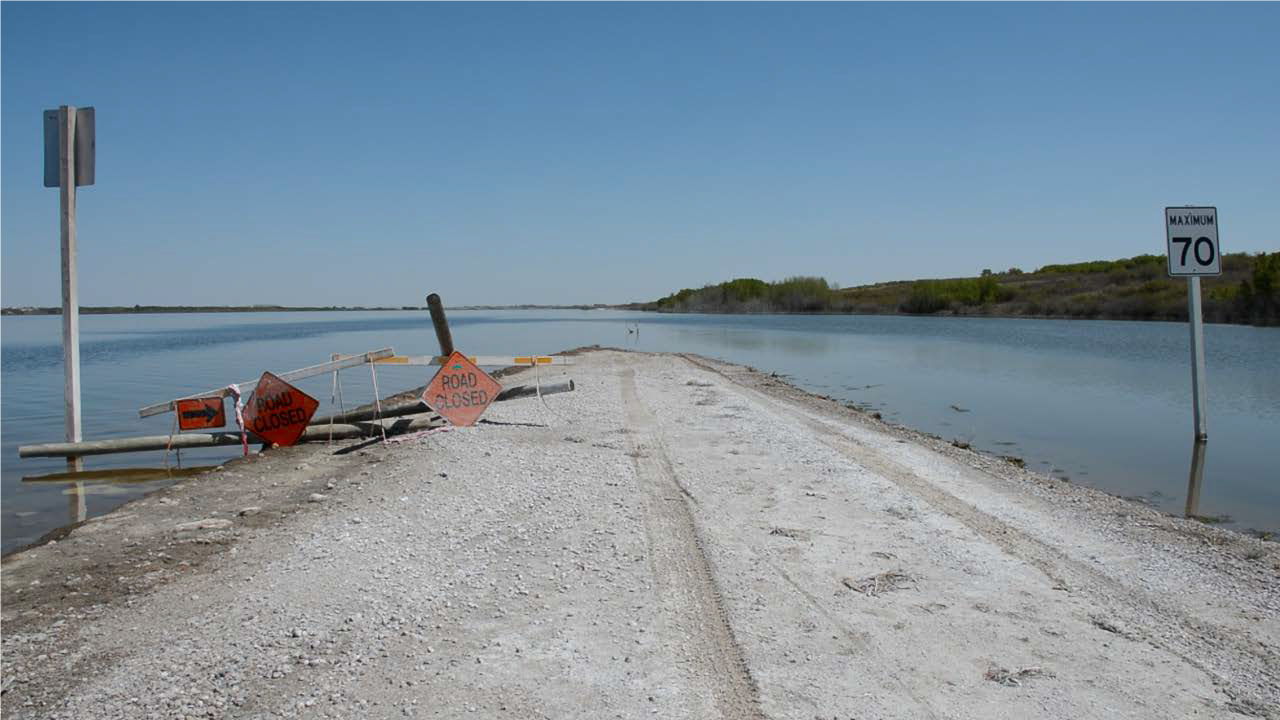This blog was written by former SRC employee, Virginia Wittrock.
Every year, Saskatchewan faces the possibility of disaster stemming from natural hazards, such as severe weather, floods, drought and wildfires. In recent years, flooding has been a significant natural hazard issue for Saskatchewan. Prairie drought was identified as the number one most costly disaster in Canada, recurring four times in the top five national disasters and eleven times in the top twenty disasters during 1900-2010 (Public Safety Canada, 2010)1. The forest fires in northern Saskatchewan in 2015 had not only environmental impacts, but social and economic as well.

When climate change impacts are considered, it’s estimated that our climate will be even more variable in the future, with potentially more floods, drought and storms (Corkal et al, 2011)2.
The province, the federal government, municipalities and individuals pay the high costs arising from these disasters. As costs increase, disaster mitigation measures (e.g., dykes, berms, building codes, land use planning) become more cost effective.
Disaster mitigation measures can greatly reduce the costs and suffering incurred during and after a disaster event. They are estimated to have a 4:1 return (long-term) on investment. A risk assessment is the first step in mitigating disasters and helps prioritize the greatest hazard risks.
Identifying and Assessing Risks
We worked with the Saskatchewan Ministry of Government Relations and other research partners to conduct a Saskatchewan Flood and Natural Hazard Risk Assessment for the province, which was funded by the federal and provincial governments under the National Disaster Mitigation Program (NDMP).
The risk assessment:
- identified our most significant natural hazard types
- assessed the frequency that various natural hazards occur
- assessed the associated risk that natural hazards have for people, infrastructure, buildings and the environment
- considered the impact of climate change on the frequency and magnitude of natural hazards
A critical part of the risk assessment was consultations. SRC, with Walker Projects, Inc., R. Halliday & Associates and Wheaton Consulting, held six consultation sessions in May and June 2017 across the province.
Presentations from Consultation Sessions
- Introduction to Stakeholder Workshops
- Natural Hazards: Drought
- Natural Hazards: Floods
- Natural Hazards: Wildfires
- Natural Hazards: Future Climate Scenario
The result
A Saskatchewan Flood and Natural Hazard Risk assessment was prepared by SRC along with a team of experts from across Saskatchewan. It concluded that drought and convective summer storms are the province’s highest risk natural hazards followed by forest fires and winter storms. The assessment will inform and help the province prioritize long-term flood and natural hazard mitigation measures (e.g., future-targeted floodplain mapping, mitigation planning and/or structural works within the province).
We also prepared a Stakeholders Insight Report (authored by D. Corkal from Walker Projects Consulting Engineers) to gather local knowledge following regional workshops held in 2017. Read the Government of Saskatchewan news release about the assessment.
Final Reports
References
- Public Safety Canada, 2010. Canadian Disaster Database. Accessed 5 April 2010. http://www.publicsafety.gc.ca/prg/em/cdd/srch-eng.aspx. [Search: All disasters, All locations, 1900 to 2010, Sorted by estimated cost.]
- Corkal, D.R, H. Diaz and D.J. Sauchyn (2011). Changing Roles in Canadian Water Management: A Case Study of Agriculture and Water in Canada’s South Saskatchewan River Basin, Int. J. of Water Resources Development, 27:4, 647-664.
